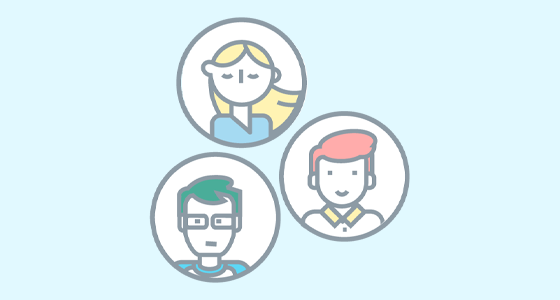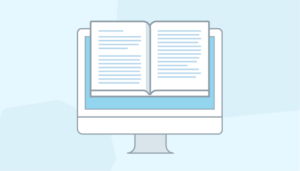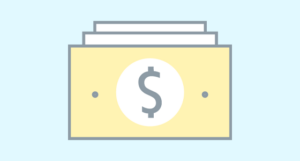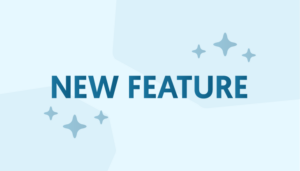In the world of Ecommerce, personalization has become one of those buzzwords that many have latched on to because of the success in bringing a more custom experience to customers. While the B2C Ecommerce world has been quick to catch on to this, like many technology trends the B2B and wholesale spaces are still playing catch-up.
The good news is personalization can be pretty simple and straightforward, although as you dive deeper it can also get more complex and detailed (which can lead to some pretty amazing things for your customers). Let’s take a look at ways you can personalize the B2B and wholesale Ecommerce experience.
Use Their Name
This may sound logical, but many Ecommerce systems don’t always make names available as a data point when implementing an Ecommerce site. But most Ecommerce systems will capture a name right up front as far as customer registration. So if you have it, use it! There’s a variety of places you can place names on your B2B website:
- In the logged in menu: You can easily say “Hi, John!” in the website at the top, where they see their My Account menu. Some platforms, like Zoey, will also give you other options, such as email address (perhaps you don’t capture a name or require it, or capture a business name that’s less relevant).
- In emails: Just like many of us receive emails from various Ecommerce stores with our name in it, you should consider to do so when sending marketing, order, shipping, abandoned cart and other emails that you might choose to send to your current and prospective buyers. Emails with personal information can feel less sterile or robotic, and make someone more likely to open them.
- In My Account: If the section is designed to give information about orders and personal information updates, a name here can instantly confirm a customer is in the right place.
Basic personalization will get you going, but next-level personalization is where it can get interesting, especially in the world of B2B and wholesale Ecommerce
Pricing Segmentation
For many B2B and wholesale businesses, their pricing model is a bread-and-butter feature of how they maximize their opportunity. Volume breaks, customer contracts and sales incentives generally lead to a variety of pricing scenarios that aren’t one size fits all. So having the ability to offer more bespoke pricing through your B2B website can be a key hurdle to clear to move from more manual approaches and become more tech friendly. Here are ways pricing segmentation can be leveraged:
- Customer Groups: At the most basic level, if your pricing is divided into a number of clear scenarios, and customers are assigned to each, you can segment your customers using Customer Group capabilities in B2B Ecommerce solutions that support it. When a customer logs in, they can see their specifically assigned pricing, without having to contact customer support or a salesperson.
- Request a Quote: Sometimes the order itself may receive adjusted pricing based on the volume of the order or the specific customer in question’s buying patterns changing. Salespeople and customers alike can build draft orders, and an order priced accordingly, when a Quote system is available to either party. Based on the selections made for an order, a customer can inquire about pricing. Or a salesperson assisting a customer can share a pre-built quote that, if accurate, can be converted immediately to an order by a customer.
- Discount and Sales Promotions: Marketing teams may sometimes with to offer special promotions or incentives to buy certain items. Such promotions may only be available to certain customers or groups. So robust promotional engines with the ability to restrict the discounts to certain customers or customer types can be a valuable tool to clear out excess inventory or old product to those who are inclined to purchase it, among other possibilities.
Presentation Segmentation
You may find that you want to further divide the experience and offer something specific to various customer types. Segmentation can go well beyond just a pricing structure, including:
- Catalog Segmentation: You may have different product lines and wish to only show certain customers certain lines. Or you might have completely different business divisions with their own product lines, but wish to use one store to manage all your customers.
- Content Segmentation: You may want different homepages for your customer segments. The return policy might differ. You may wish to merchandise product differently for bigger wholesale buyers vs. a retail buyer who may have lower quantity requirements, or even those browsing as a guest to your site. Being able to show relevant content to each group will make the shop more welcoming to each.
- Theme Segmentation: In the most extreme cases, you may wish to present a completely different theme to different customer types. Perhaps your B2B buyers wish to have a straightforward buying portal, while your B2C customers which to have a browsable shopping experience. If you have different brands, perhaps you want each brand to have its own presentation for those customers. Or you might want to take the content merchandising segmentation a step further and simply offer a completely unique experience for each group. Theme segmentation offers a multi-store offering within a single shop.
We Can Help with Ecommerce Personalization
Zoey is experienced in helping merchants offer their buyers and customers a personalized experience with a powerful set of B2B tools that allow for granular control without being overly complex. Find out how Zoey can assist you in superserving your customers by talking to one of our Customer Success Experts:






